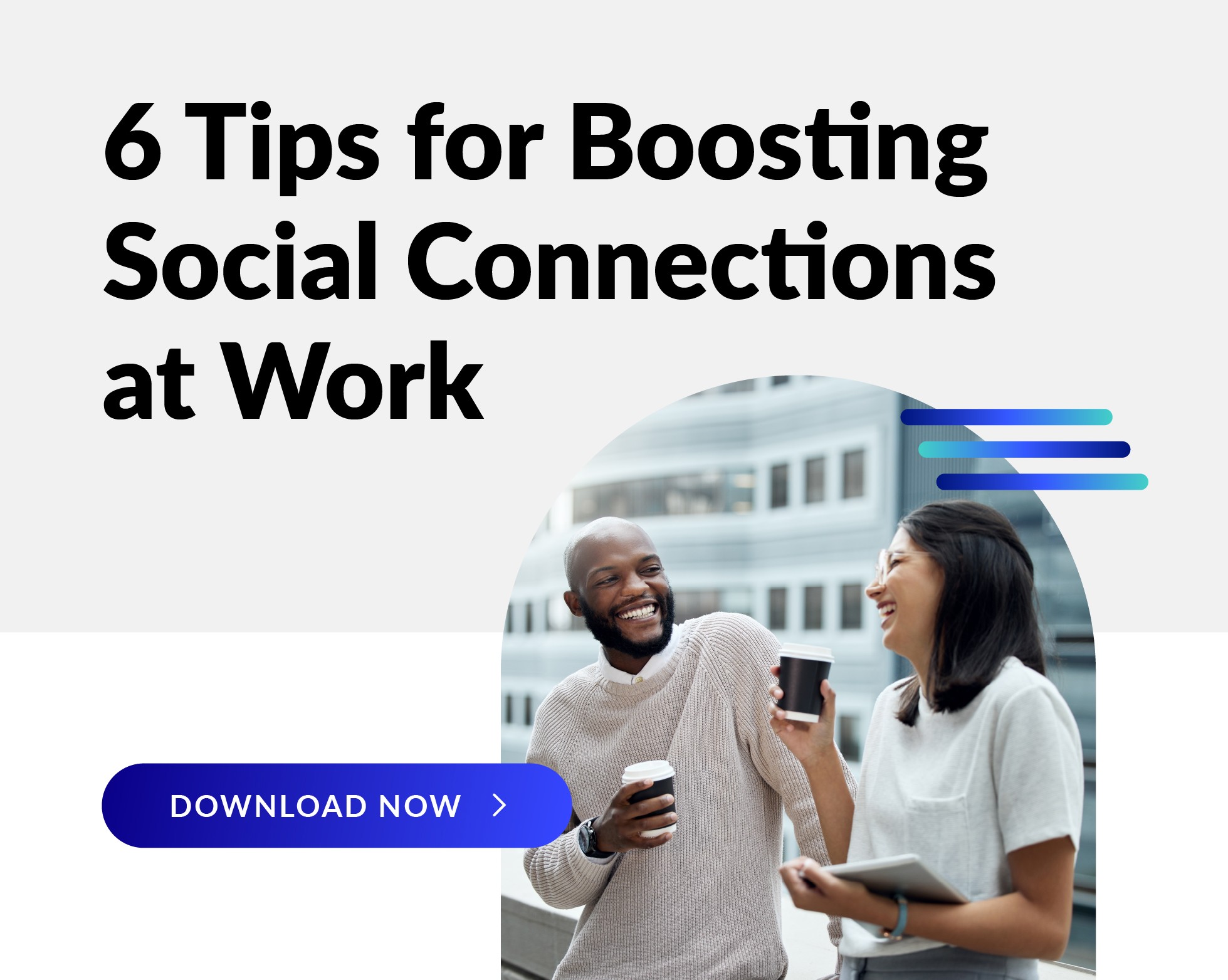 It’s great to take stock of your well-being program at the end of each program year. What worked? What didn’t? What adjustments should you make to reflect changing employee needs? As you look back on your program and begin planning your new strategy, consider incorporating these popular workplace wellness ideas to elevate your employee experience.
It’s great to take stock of your well-being program at the end of each program year. What worked? What didn’t? What adjustments should you make to reflect changing employee needs? As you look back on your program and begin planning your new strategy, consider incorporating these popular workplace wellness ideas to elevate your employee experience.
These past few years have taught us a lot about what employees want and need in a well-being program. Perhaps most importantly, it’s crystal clear that helping employees with mental health is critical to their ability to be productive, happy, and healthy at work and at home. Another key learning is that employees need help from employers to care for the many other aspects of their lives that ultimately affect on-the-job performance. And ultimately, it’s up to employers to provide a positive employee experience that can help them not only during working hours, but on their own time as well.
A good well-being program can help with all of that and more. So, as you sit down to assess what your program will look like, consider these well-being ideas in the workplace to help boost your employee experience:
Support for the whole employee.
Three areas employees most want help with are:
Financial wellness.
When employees are stressed about finances, their physical health can suffer, and the stress can lead to mental health concerns like anxiety, depression, or even suicide. Financial wellness programs give employees the tools they need to prevent small problems from spiraling out of control—like help managing day-to-day expenses, how to weather unplanned expenses, or learning how to plan and save for future milestones.
Mental wellness.
Americans were struggling with mental health way before the pandemic. The data is even starker now. Things you can do include: promote your EAP’s free counseling sessions, add mental telehealth visits to your benefits, offer paid mental health days, and provide access to mindfulness, sleep and meditation apps. But, most importantly, make sure your culture supports good mental health by allowing employees to set boundaries, ensuring leaders model healthy behaviors, and encouraging time off to recharge.
Caregiving.
You may have heard that there is a childcare crisis in America right now. Which means it’s in employers’ best interest to step in and help so that workers can be productive. Some employers have increased backup childcare options; others have created “pods” in offices for remote-schooled children or begun plans for onsite daycares. Flexible hours and a four-day workweek can also help ease the childcare crunch.
Consider this: If you’re still of the mindset that a traditional suite of employee benefits is all you need, you may be blindsided when your best talent heads to an employer who does support them across their whole life.
Incentives.
Behavioral science teaches us that humans sometimes need a little “nudge” to start or stop a new behavior—especially when it comes to health. Incentives are a great way to help people work on their well-being, whether in the form of gift cards, memberships, reduced health plan premiums—whatever fits in with your organization’s culture and core values.
Is it time to refresh your incentive strategy?
With a greater focus on our holistic well-being, we’re starting to see companies incentivize non-physical behaviors, like participating in resilience training, stress management courses, sleep quality programs, meditation courses, and financial wellness checkups.
Need to jazz up your incentives?
People get tired of the same old mousepad or coffee mug. With so many employees working from home, how about an online fitness membership or something fun for a home office? Also, if you have a points catalog where employees can choose their rewards, make sure to update it each year.
Consider this: Some of the new incentive trends we’re seeing reflect what’s truly important to employees, including paid time off, enterprise-wide recognition, or a donation to a favorite charity.
Engagement tactics.
How do you keep the momentum going once you’ve launched a well-being program? Wellness challenges—like counting steps or drinking more water—continue to be a great way to sustain well-being program engagement and promote a positive and fun culture of well-being.
Wellness challenges are especially important right now.
A wellness challenge is a great way to keep people connected, even if they have hybrid schedules or are now completely working remotely. Some of our most successful challenges happen when worksites or divisions within a company compete against one another. After all, who doesn’t love a little healthy competition?
Wellness challenges also help to create a culture of well-being.
And we know that a culture of well-being is key to an engaged, productive workforce. Our clients who host annual challenges, like our Invitational Team Steps Challenge, see positive changes in employee morale and engagement.
Consider this: Some new wellness challenge ideas include clean eating, meditation, volunteerism, and social justice. Organizations are also paying more attention to inclusivity and providing options for those who can’t participate in a walking challenge due to a disability, like meeting with a health coach or participating in an online wellness session.
New ways of working.
Suffice to say, the company culture we knew in the “before times” doesn’t exist anymore. In some ways, this extended period away from the office—for non-essential workers, of course—has given us a chance to reflect on the aspects of our corporate culture that weren’t so positive and give it a much-needed makeover. What will you do to honor some of the learnings?
Flexible work.
Back in March 2020, we wondered if we would be able to pull off this “remote work” thing. Many months into the pandemic, the proof is in the pudding: we’ve collectively proved that yes, we can work efficiently in a remote environment, and yes, we can be just as productive—even if we’re not working a typical 9 to 5 day. Flexibility in where you work and when you work is here to stay. Empower your employees to work hours that help them balance everything they have going on.
Employee passions and authenticity.
During the pandemic, many folks took time to reinvent a part of themselves, take up a new hobby, or engage in meaningful volunteer work. We must continue to honor that, building in time to share newfound passions or rewarding activities like volunteerism.
A more empathetic workplace.
In the face of so many challenges, we’ve all had to become more empathetic with coworkers. And, thankfully, we’ve started to be more open about our mental health struggles. This includes leaders and managers, too, who’ve been called upon to share their own challenges to show employees that mental health affects everyone.
Consider this: Employees have choices when it comes to employment. They’re seeking out employers who will listen to their need for flexibility and put their well-being first. As you evaluate your well-being program and other workplace policies, take this to heart.
Communication strategy.
Chances are, you’re communicating with your employees more than ever before. Leverage these touchpoints to promote your well-being program and how it can help employees live a healthier life in these trying times. Some tactics that work well include:
- Quick, simple messages on the intranet or in a newsletter about what people can do to improve their health today, with direct links to well-being program offerings.
- Posts on workplace social media or a dedicated instant messaging channel.
- Promos about wellness events before a town hall meeting.
- A print piece mailed to employees’ homes—particularly around upcoming wellness challenges. You’ll also get the added benefit of reaching spouses who might want to participate or support the employee in their well-being efforts.
- Video testimonials to show how a certain aspect of the well-being program made a difference. Stories from senior leaders about mental health are particularly impactful.
Consider this: A good employee communication strategy is more important than ever—especially with a workforce that’s dispersed and often working asynchronously. Keep up a steady flow of communication about your well-being program so employees know exactly what’s on offer and that well-being is a priority for the organization.
We hope this round-up of the latest in employee well-being program examples has been helpful as you consider the changes you’ll make to your program. We’re always here to lend a supporting ear and share even more strategies and tips. Just visit our website or contact us at connect@webmd.net.




